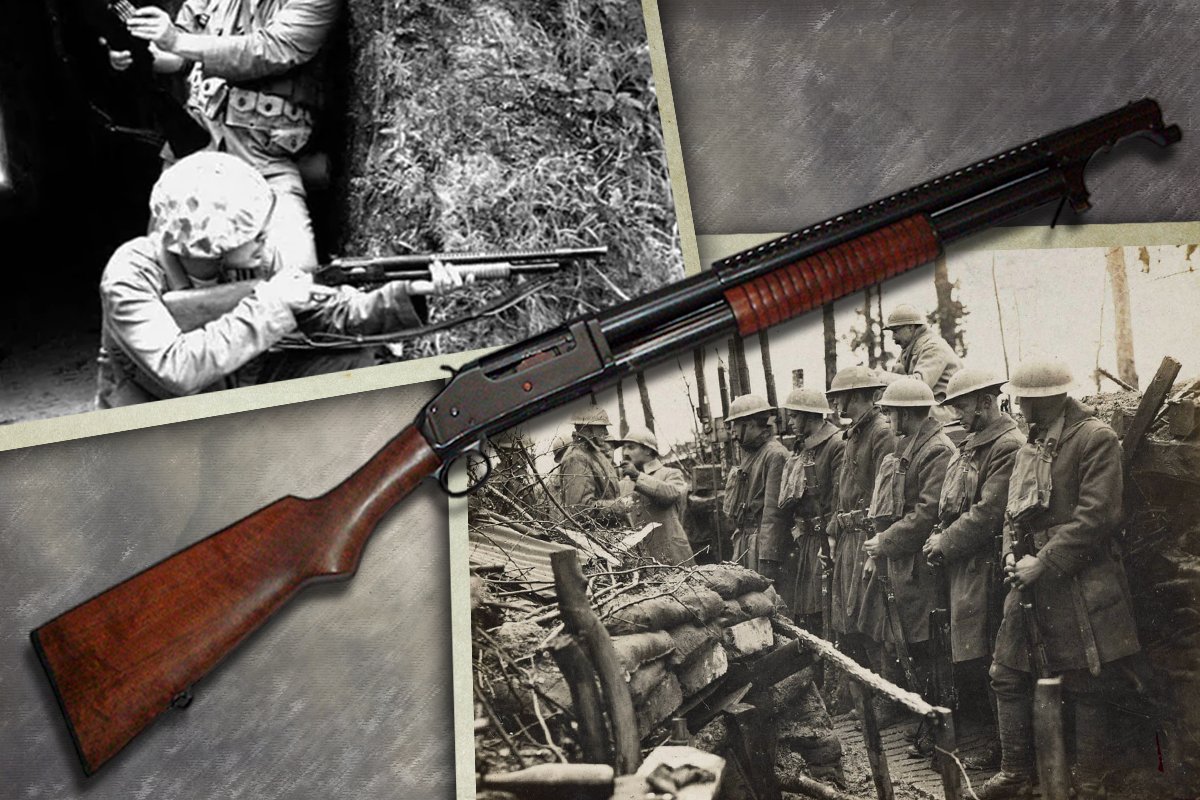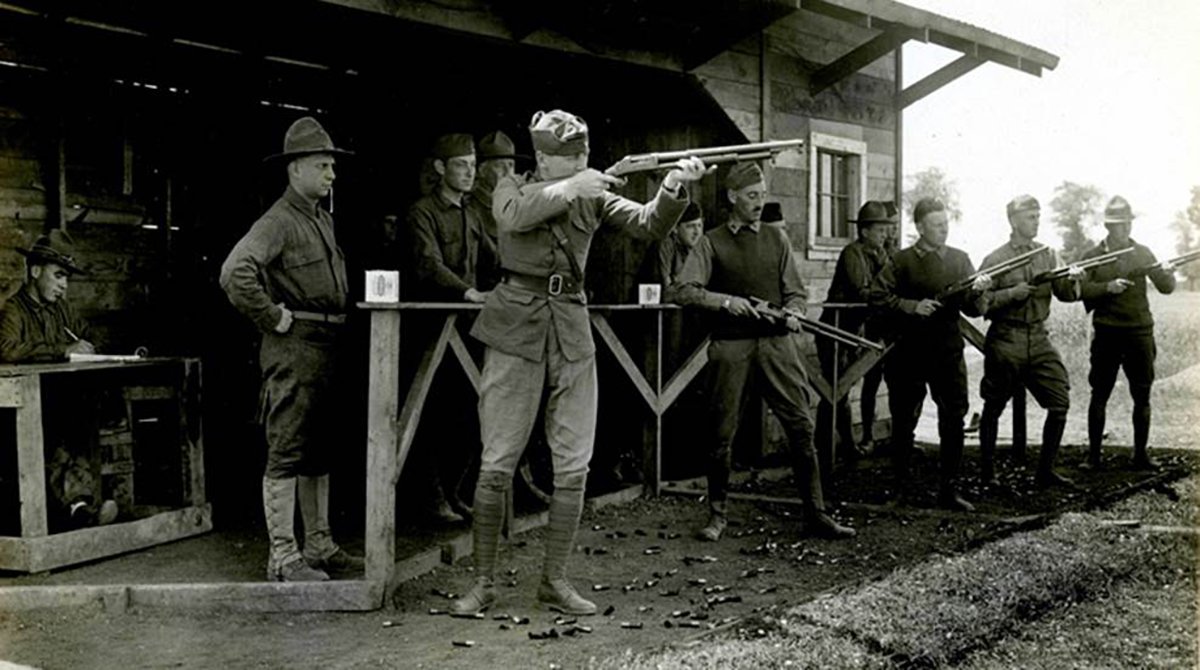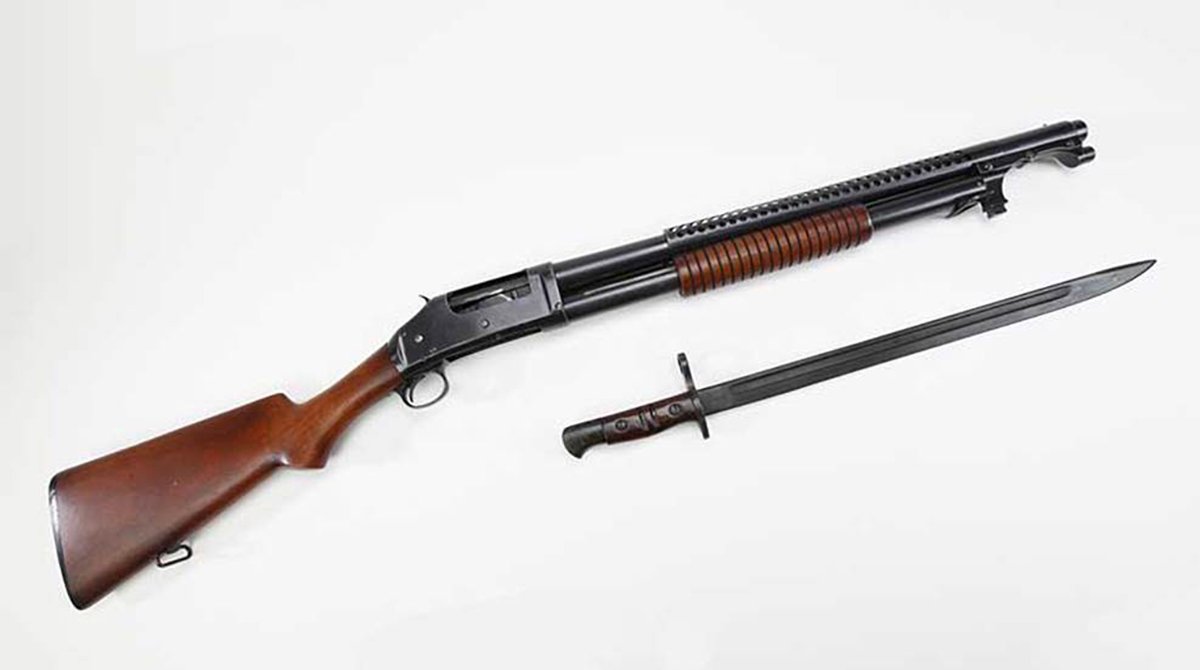Why Germany Wanted To Ban America’s Pump-Action Trench Shotgun During World War I

Although World War I had many devastating weapons used on the battlefield, the one the Germans most feared was the Yanks’ trench shotgun. Composite by Coffee or Die Magazine.
By the end of World War I, the Winchester model 1897 pump-action shotgun had gained a nasty reputation across no man’s land on the Western Front. Despite the emergence of numerous novel weapons technologies, including mechanized armor, soaring warplanes, various chemical gases, and flamethrowers, the most feared American weapon, from the German perspective, was this infamous “trench shotgun.”
“The trench shotgun is America’s greatest contribution to the war,” Peter P. Carney, the editor for the National Sports Syndicate, wrote in 1918. “Through the expert handling of the trench shotgun the Germans learned that the Yanks were coming. At the first taste of the pellets the Germans began to whine and then to write notes calling us ‘barbarians,’ Germany, too!”

Regarding the psychological impact of the handheld weapon on German troops, Carney continued, “It carries more terrors into the hearts of the enemy than any other instrument of destruction that has been used.
“The only umbrella that will assist anyone when the trench shotgun is showering pellets over the universe is an armoured tank.”
The six-shot, single-barreled trench shotgun was equipped with a bayonet and loaded with 12-gauge buckshot. Though it was primarily used by sentries because of its short range, other soldiers also relied on the trench shotgun as a means of last resort in the event they were about to be overrun or taken prisoner.
“The guns are mainly in the hands of trapshooters, men who learned to shoot at clay targets at the gun club,” Carney writes. “Trapshooters are sportsmen and have used the guns to deflect and explode hand grenades thrown by the enemy.”

Front-line American soldiers used the “slam-firing” technique, during which the trigger is held as the gun is pumped and fired from the hip, resulting in catastrophic injuries or death to anyone on the receiving end. The trench shotgun was so devastatingly effective that it spurred the German government to send an unusual request to Washington on Sept. 19, 1918, calling for the weapon’s removal from combat.
“The German Government protests against the use of shotguns by the American Army and calls attention to the fact that according to the law of war (Kriegsrecht) every prisoner [of war] found to have in his possession such guns or ammunition belonging thereto forfeits his life,” the Swiss legation in charge of representing German interests wrote in a wartime memorandum.
The German protest cited Article 23(e) of the Hague Conventions, which outlined the rules of warfare, claiming the trench shotgun caused “unnecessary suffering.”
Although the German request successfully reached Washington, it was promptly ignored. Today, more than 100 years since the guns went silent on the Western Front, variations of the trench shotgun still remain within the US military’s arsenal.
Read Next: Beneath Hill 60: The Heroism of the 1st Australian Tunnelling Company

Matt Fratus is a history staff writer for Coffee or Die. He prides himself on uncovering the most fascinating tales of history by sharing them through any means of engaging storytelling. He writes for his micro-blog @LateNightHistory on Instagram, where he shares the story behind the image. He is also the host of the Late Night History podcast. When not writing about history, Matt enjoys volunteering for One More Wave and rooting for Boston sports teams.
BRCC and Bad Moon Print Press team up for an exclusive, limited-edition T-shirt design!
BRCC partners with Team Room Design for an exclusive T-shirt release!
Thirty Seconds Out has partnered with BRCC for an exclusive shirt design invoking the God of Winter.
Lucas O'Hara of Grizzly Forge has teamed up with BRCC for a badass, exclusive Shirt Club T-shirt design featuring his most popular knife and tiomahawk.
Coffee or Die sits down with one of the graphic designers behind Black Rifle Coffee's signature look and vibe.
Biden will award the Medal of Honor to a Vietnam War Army helicopter pilot who risked his life to save a reconnaissance team from almost certain death.
Ever wonder how much Jack Mandaville would f*ck sh*t up if he went back in time? The American Revolution didn't even see him coming.
A nearly 200-year-old West Point time capsule that at first appeared to yield little more than dust contains hidden treasure, the US Military Academy said.












